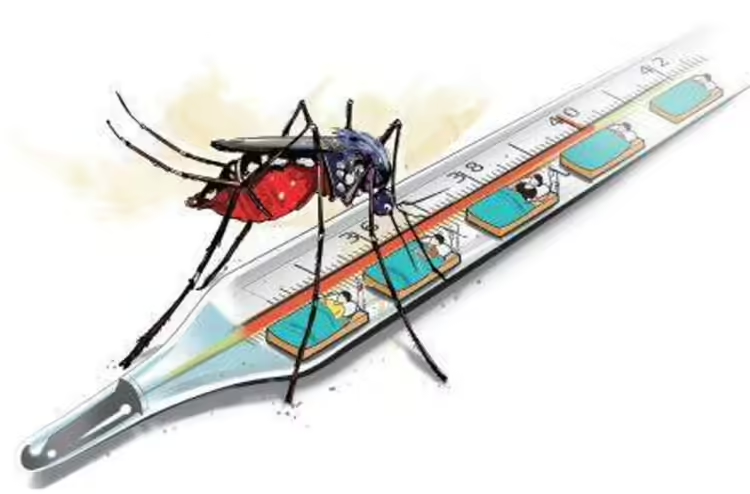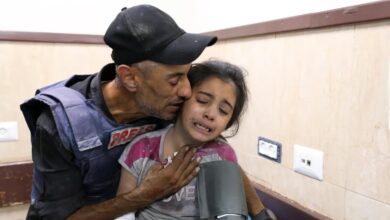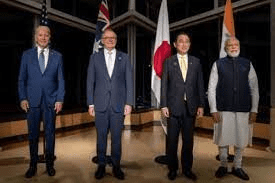“Global malaria efforts slow down; severe disparities must be addressed”: WHO
NEW DELHI: Even though the mosquito-borne disease affects nine out of eleven countries in Southeast Asia and accounts for a third of the global burden outside of Africa, efforts to reduce malaria have stagnated, posing a serious threat to public health and escalating social inequality within communities, the WHO said on Wednesday.

The World Health Organization (WHO) said that there is an urgent need to address the glaring disparities in access to services for malaria prevention, diagnosis, and treatment on World Malaria Day, which is commemorated on April 25.
According to Saima Wazed, WHO Regional Director for Southeast Asia Region (SEARO), “malaria remains a significant public health challenge in our region, affecting nine out of eleven countries and accounting for a third of the global burden outside Africa.”
Accelerating the battle against malaria for a more equitable world is this year’s World Malaria Day theme.
According to the Regional Director, there are a number of ways to accomplish this, including eradicating stigma and discrimination, involving communities in healthy decision-making, providing primary healthcare close to people’s homes, addressing risk factors for malaria, and incorporating malaria control interventions into universal health coverage.
Malaria claims the lives of four people worldwide every three minutes. With almost five million cases and nine thousand fatalities from malaria in 2020, the Southeast Asian area was the second-largest contributor to malaria cases globally, behind the African region.
In the WHO South-East Asia Region in 2022, 66% of malaria cases were reported from India. According to the World Malaria Report, 5,511 fatalities and 33.8 lakh cases are predicted for India in 2022.
In India, the incidence of malaria decreased by 30% and the fatality rate decreased by 34% in 2022 over the previous year. By 2030, India wants to be malaria-free—that is, to have no native cases.
96% of malaria cases in 2020 occurred in 29 of the 85 countries where the disease is prevalent. 1.2% of worldwide malaria fatalities and 1.7% of cases were caused by malaria in India.
Everyone has the right to timely, effective, and reasonably priced malaria treatment, according to the director of WHO SEARO, but many people still struggle to get these services, which feeds a cycle of injustice that disproportionately impacts the weakest members of society.
“Let us unite in our commitment to expedite the fight against malaria, establish collaborative relationships, and employ evidence-based tactics to realize a fairer world where no individual is left behind in our endeavor to eradicate malaria permanently,” she said.
Children under five years old are more vulnerable, since their risk is exacerbated by differences in their access to education and financial resources.
Additionally, pregnant women are at higher risk since pregnancy lowers immunity to malaria, increasing the likelihood of infection and serious illness.
Their susceptibility is further increased by discrimination, unfavorable gender norms, and gender inequality. Malaria during pregnancy may have fatal effects, such as severe anemia, maternal mortality, stillbirth, early delivery, and low birth weight in children, if prompt and proper management is not received, the speaker said.
She said that those who are internally displaced, refugees, migrants, indigenous people, and those who are often left out of disease control initiatives are also more vulnerable to malaria since they live in unfavorable environments that favor the spread of the illness.
These problems are made worse by climate change and humanitarian crises, which force communities to relocate and increase their susceptibility to the illness.
Noting that the region has seen the largest drop in malaria cases and fatalities among all WHO regions, she pointed out that there had been some improvement in recent years.
She stated that nations like Bhutan, Nepal, and Timor-Leste have made significant strides, showing that the eradication of malaria is possible with political will and teamwork.
But, she said, the fight to eradicate malaria is far from over.
WHO requests that the obstacles to gender parity, human rights, and health equity in malaria responses get fresh emphasis on this occasion.
The regional director said, “We need to step up our efforts to overcome these obstacles and make sure that everyone has access to life-saving malaria prevention, diagnosis, and treatment services, regardless of their socioeconomic status or geographic location.”
Additionally, she said, “By utilizing digital technology, we can gather and analyze data, track progress in real-time, and better understand the various health needs of populations. This allows us to identify and address health inequities through innovative service delivery and proven interventions.”According to the WHO on Wednesday, the area bears a third of the worldwide load outside of Africa.
The World Health Organization (WHO) said that there is an urgent need to address the glaring disparities in access to services for malaria prevention, diagnosis, and treatment on World Malaria Day, which is commemorated on April 25.
According to Saima Wazed, WHO Regional Director for Southeast Asia Region (SEARO), “malaria remains a significant public health challenge in our region, affecting nine out of eleven countries and accounting for a third of the global burden outside Africa.”
Accelerating the battle against malaria for a more equitable world is this year’s World Malaria Day theme.
According to the Regional Director, there are a number of ways to accomplish this, including eradicating stigma and discrimination, involving communities in healthy decision-making, providing primary healthcare close to people’s homes, addressing risk factors for malaria, and incorporating malaria control interventions into universal health coverage.
Malaria claims the lives of four people worldwide every three minutes. With almost five million cases and nine thousand fatalities from malaria in 2020, the Southeast Asian area was the second-largest contributor to malaria cases globally, behind the African region.
In the WHO South-East Asia Region in 2022, 66% of malaria cases were reported from India. According to the World Malaria Report, 5,511 fatalities and 33.8 lakh cases are predicted for India in 2022.
In India, the incidence of malaria decreased by 30% and the fatality rate decreased by 34% in 2022 over the previous year. By 2030, India wants to be malaria-free—that is, to have no native cases.
96% of malaria cases in 2020 occurred in 29 of the 85 countries where the disease is prevalent. 1.2% of worldwide malaria fatalities and 1.7% of cases were caused by malaria in India.
Everyone has the right to timely, effective, and reasonably priced malaria treatment, according to the director of WHO SEARO, but many people still struggle to get these services, which feeds a cycle of injustice that disproportionately impacts the weakest members of society.
“Let us unite in our commitment to expedite the fight against malaria, establish collaborative relationships, and employ evidence-based tactics to realize a fairer world where no individual is left behind in our endeavor to eradicate malaria permanently,” she said.
Children under five years old are more vulnerable, since their risk is exacerbated by differences in their access to education and financial resources.
Additionally, pregnant women are at higher risk since pregnancy lowers immunity to malaria, increasing the likelihood of infection and serious illness.
Their susceptibility is further increased by discrimination, unfavorable gender norms, and gender inequality. Malaria during pregnancy may have fatal effects, such as severe anemia, maternal mortality, stillbirth, early delivery, and low birth weight in children, if prompt and proper management is not received, the speaker said.
She said that those who are internally displaced, refugees, migrants, indigenous people, and those who are often left out of disease control initiatives are also more vulnerable to malaria since they live in unfavorable environments that favor the spread of the illness.
These problems are made worse by climate change and humanitarian crises, which force communities to relocate and increase their susceptibility to the illness.
Noting that the region has seen the largest drop in malaria cases and fatalities among all WHO regions, she pointed out that there had been some improvement in recent years.
She stated that nations like Bhutan, Nepal, and Timor-Leste have made significant strides, showing that the eradication of malaria is possible with political will and teamwork.
But, she said, the fight to eradicate malaria is far from over.
WHO requests that the obstacles to gender parity, human rights, and health equity in malaria responses get fresh emphasis on this occasion.
The regional director said, “We need to step up our efforts to overcome these obstacles and make sure that everyone has access to life-saving malaria prevention, diagnosis, and treatment services, regardless of their socioeconomic status or geographic location.”
Additionally, she said, “By utilizing digital technology, we can gather and analyze data, track progress in real-time, and better understand the various health needs of populations. This allows us to identify and address health inequities through innovative service delivery and proven interventions.”







